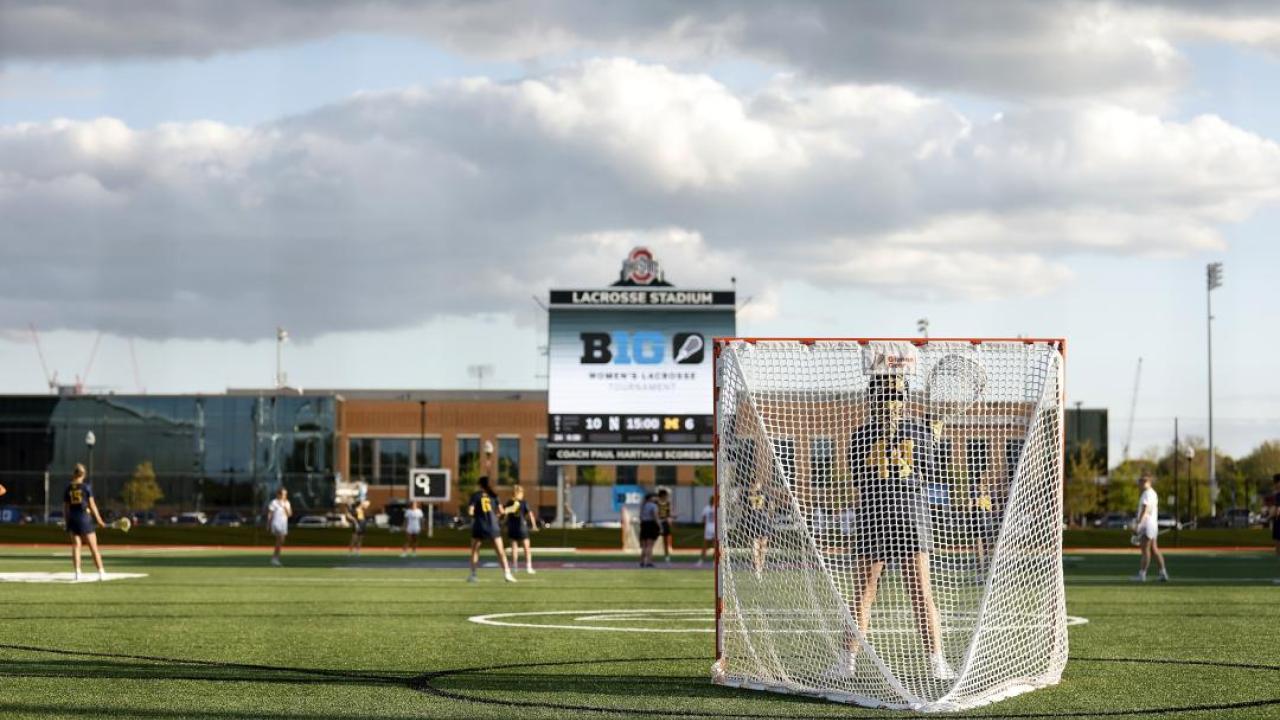
NCAA Women's Lacrosse Committee Proposes Shift from 7v7 to 6v6 in the Box
At its meetings this week in Indianapolis, the NCAA Women’s Lacrosse Rules Committee proposed 6-vs.-6 play when the ball is possessed below the restraining line, beginning with the 2023-24 academic year.
All rule proposals must be approved by the NCAA Playing Rules Oversight Panel before becoming official. The panel is scheduled to discuss women’s lacrosse rules recommendations July 19.
Under the proposal, teams would play 11 vs. 11 in total. Currently, NCAA women’s lacrosse games are conducted with teams playing 7 vs. 7 below the restraining line and 12 vs. 12 overall.
Committee members think the changes would mitigate the congestion in the critical scoring area of the field and create more space that could encourage growth and enhance the safety of players. The recommendation also could improve officials’ identification of three-second, shooting-space and off-ball fouls.
If the pace of the game increases, the committee thinks the proposal also could create more substitution opportunities.
“Our decision to change the format from 7 vs. 7 to 6 vs. 6 had a lot to do with the safety of our game,” said Kim Wayne, the committee chair and women’s lacrosse coach at Davidson. “Opening the field by eliminating two players from inside the 8-meter arc and below the restraining line will give the officials the opportunity to call other physical fouls that have been challenging to identify.”
ONE-MINUTE PENALTIES
To curtail physical play outside the critical scoring area, the committee proposed increasing the scenarios when teams have the advantage of playing a player up.
Green cards, which are one-minute releasable penalties, will be given to teams committing fouls such as:
-
Blocking/illegal picks.
-
Charging.
-
Cross checks.
-
Forcing through.
-
Holding.
-
Illegal use of the stick.
-
Pushing.
-
Tripping.
Officials also could give a five-minute red card for contact to the body if they think the contact warrants a greater penalty.
“The safety of our players was a point of emphasis going into this rule-change year,” Wayne said. “We believe that holding players accountable for fouls by issuing a one-minute penalty will deter fouls that have increased the physicality of our game.”
THREE SECONDS
The committee recommended tweaking the three-second rule, specifying that a defender must be an arm and stick length away when guarding a player inside the 8-meter arc. Currently, the rule is the defender must be a stick length away.
Defensive players still would be penalized for three-second violations if they are not marking a player inside the 8-meter arc. Any defensive player inside the 8-meter arc must be guarding another player and can’t be in the middle of the arc without marking a player.
OTHER RULES RECOMMENDATIONS
-
Clarified that lacrosse-specific ND200 close-fitting padded compression shirts can be worn underneath players’ jerseys.
-
The time that players are serving cardable penalties would not only carry over into the next period or overtime, as the current rule states, but the team would retain possession at the spot of the ball or dot if within the critical scoring area.
-
Any player on the team awarded a free position could take possession of the ball unless an 8-meter free position shot is awarded. In that case, the free position must be taken by the player who was fouled.
-
Players who fake/embellish being fouled would be issued a one-minute penalty.
-
Regardless of the result of the shot, if a whistle is blown for a shooting-space violation simultaneous with or immediately after a shot, the penalty would not be administered.
-
If the defensive team has too many players below the restraining line in its defensive end, it would result in a one-minute penalty.
-
When an official instructs a player to leave the field, players could be issued a delay-of- game penalty if they do not leave the field at once.
-
Shoes could have soles containing aluminum, leather, rubber, nylon or plastic cleats, studs or bars, whether molded as part of the sole or detachable, if the official does not consider them dangerous.
Press Release
Categories
Tags
Related Articles




